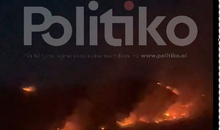
 Flash News
Flash News
International drug search: 36-year-old arrested in Durrës (NAME)
Veliaj's appeal to be heard today in the High Court
Today's hearing at the Fier Court, Salianji requests conditional release
Taxi collides with truck on Lezhë-Shkodër axis, driver taken to Trauma in serious condition
At least 91 dead in Texas floods

Alfred Lela
Today, at 6:00 p.m., the Democratic Party and its opposition allies will gather in what they have called a "march towards Tirana" to react to the country's political, economic, and social situation. This time, there will be no speeches, calls, or even scenography, but this is not new.
The protest, intended as a march, aims to include everyone who disagrees with this government. So it is meant to be horizontal, not vertical; not with Berisha and other exponents of PD and the opposition who make calls or present the theses of the revolt, but with people who march alongside each other, regardless of whether they are left or right, nationalist or cosmopolitan, conservative or progressive.
Therefore, today's opposition protest is urbi et orbi, for the world and the city, addressed to everyone and no one in particular.
The idea here is that a bad government does not distinguish between itself and its opponents; a bad government, when it mismanages or corrupts public funds, affects not only the taxes of Democrats but also of Socialists, not only destroys today's finances but interferes with the chances of the future.
This awareness should unify those who have been protesting against Edi Rama and his government for years with those who are dissatisfied, angered, and disagree with how things are going in Albania.
Any temptation to see the protest as a plight of the political opposition is the old attempt to build dividing blocks of 'us' and 'them', 'good' and 'bad', 'left' and 'right'. In an Albania that works, everyone is 'good'; the opposite, in an Albania that works only for a minority, everyone is 'bad'. This is because, all together, they lose what is the essence of a democratic system: equal chances in the game, and only capacities make the difference. When this equation is undone, we have the law that erases any excess of one over the other.
Albania today is the excess of a small group over the majority. Nothing explains this more simply and clearly than Albania shrinking and the diaspora swelling. This exodic flight is not a psychedelic whim but a migration for a 'change of environment'; those who flee are not artists who move in search of inspiration but Albanians who want to place themselves in front of equal opportunities and equality before the law.
The rejecters of today's protest are, therefore, of two types. Those who are gone and have no way to be, and those who remain have no way to come. This second group includes the captured army of the administration and their families who, willingly or unwillingly, form the army of patron Nazis, which today will be under total surveillance of the opposition march in Tirana.
We should not hide behind our fingers. Yes, there is a decline in protests and participation—for the reasons mentioned above—but the misunderstanding here is that of those who complain about the 'powerlessness of the opposition.' Those who contributed to the shrink discuss it as someone else's fault. The depth of the problem tightens society and speaks of its powerlessness to keep alive the mechanisms of disobedience, renewal, dissent, rotation, etc.
Those who fled protested on foot, and some of those who remained were constantly on foot. Others refuse to recognize the reasons for those who flee and those who stand.
These are the people who are sitting on their ass.
Latest news

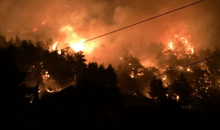
Fire in Dukat endangers Llogara National Park
2025-07-08 10:01:39
International drug search: 36-year-old arrested in Durrës (NAME)
2025-07-08 09:50:48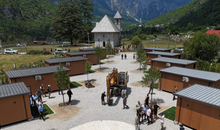
Thethi, tourists "criticize" modern trend
2025-07-08 09:39:54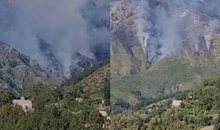
Fire on Mount Dukat still active, Llogara National Park at risk
2025-07-08 09:28:12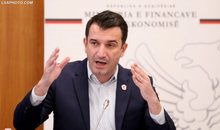
Veliaj's appeal to be heard today in the High Court
2025-07-08 09:16:02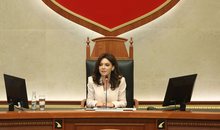
"Bad sign for democracy"/ Parliament neglects reporting by institutions
2025-07-08 09:04:56
Today's hearing at the Fier Court, Salianji requests conditional release
2025-07-08 08:56:39
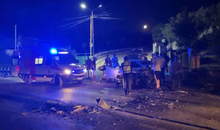

Horoscope, what do the stars have in store for you today?
2025-07-08 08:16:19
Weather forecast/ How temperatures will vary throughout the day
2025-07-08 08:02:37
Morning Post/ In 2 lines: What mattered yesterday in Albania
2025-07-08 07:48:30





Marrëdhënia që s’është romancë, por s’është as thjesht kolegiale
2025-07-07 21:39:13
Citizen is asked to pay 2.5 million for a non-existent meter
2025-07-07 21:28:03

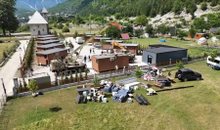


What is the ideal air conditioner temperature in summer?
2025-07-07 20:53:46
GJKKO left him in prison, Meta appeals the decision
2025-07-07 20:38:05
Where is Ronaldo after missing Diogo Jota's funeral?
2025-07-07 20:38:04

Messages from the author who killed Ilaria Sulla in Rome are revealed
2025-07-07 20:20:12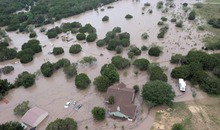
At least 91 dead in Texas floods
2025-07-07 20:12:02
Elbasan, choked by smoke, scorched by conscience
2025-07-07 19:48:16

Swarm of bees attacks citizens in France, 24 people end up in hospital
2025-07-07 19:32:03
Dementia/Hearing loss may be a warning sign
2025-07-07 19:13:06
The decision for Malltez, Gjokutaj: Boomerang for SPAK and the Court
2025-07-07 19:01:08

Former Supreme Court member acquitted of asset concealment
2025-07-07 18:36:40

WIIW expert in Politiko: Brain drain is steadily weakening the Albanian economy
2025-07-07 18:11:41
Heart health is at risk from extreme heat, here's what you should be careful of
2025-07-07 18:10:18
Today Gert Bogdani would celebrate, Edlira Çepani's touching dedication
2025-07-07 17:40:45
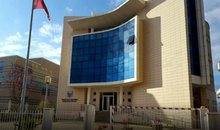
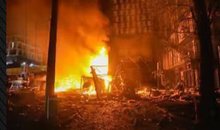

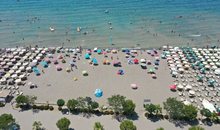


The striker severely accuses the Fenerbahce club: They tried to drug me
2025-07-07 16:21:03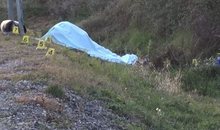
A decomposed body is found in Kolonjë, initial suspicions
2025-07-07 16:03:31
Accident in Saranda, car hits motorcycle, one injured
2025-07-07 15:58:56

The most fertile age for men and women
2025-07-07 15:40:52
Locals, Rama candidate in 5 municipalities
2025-07-07 15:32:22
Blushi: Meta's criminal kidnapping, incomparable even to Navalny's in Russia
2025-07-07 15:20:34
Meet the iPhone 17 Pro, the main innovations in design and technology
2025-07-07 15:09:09
Why the release of Abi Malltez does not free him; much less Albania
2025-07-07 15:00:12
‘Lidhjet klienteliste’ të mjekëve mbushin recetat e pacientëve
2025-07-07 14:57:33
Poland imposes border controls with Germany and Lithuania
2025-07-07 14:48:15

Caught transporting firearms from Kosovo to Albania, young man arrested (NAME)
2025-07-07 14:37:47
Theo Hernandez flies to Saudi Arabia for medical check-ups
2025-07-07 14:26:47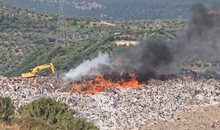

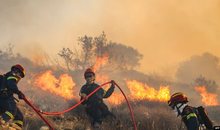
Scorching heat, Greece orders mandatory work holidays
2025-07-07 13:54:25




Trump expects Netanyahu to discuss Gaza ceasefire
2025-07-07 12:54:27
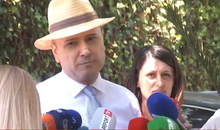
GJKKO releases Jamarbër Malltezi from house arrest
2025-07-07 12:35:02
Tourism among contrasts
2025-07-07 12:31:01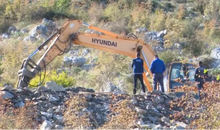
IKMT action in Theth, starts demolition of unauthorized constructions
2025-07-07 12:24:18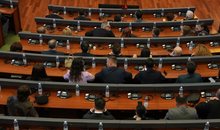
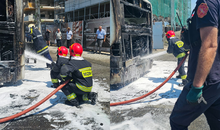
The Tirana-Kamëz line is destroyed by urban fire
2025-07-07 12:00:24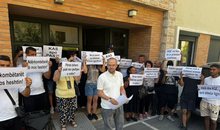




Poor direction!
2025-07-07 11:16:01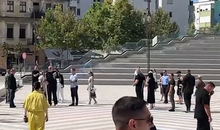


Rama to gather the country's mayors on July 9
2025-07-07 10:43:31
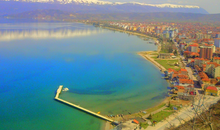
Ohrid Natural Park on the way to UNESCO's "black list"
2025-07-07 10:25:58

Registrations for the new school year begin in e-Albania
2025-07-07 09:59:09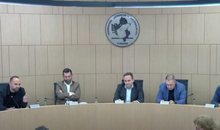
KAS decides the "fate" of the elections in four districts of the country today
2025-07-07 09:50:51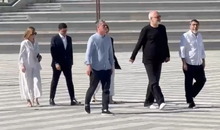
Rama does not give up on Vlora, visits the municipality again
2025-07-07 09:39:11

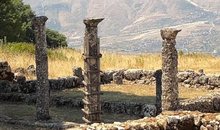
Fires in Gjirokastra, flames very close to cultural monuments
2025-07-07 09:12:49

Foreign exchange, the rate at which foreign currencies are sold and bought
2025-07-07 08:39:57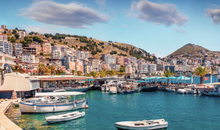

Horoscope, what do the stars have in store for you today?
2025-07-07 08:14:17
The week starts with scorching temperatures, the thermometer reaches 37°C
2025-07-07 07:58:36
Morning Post/ In 2 lines: What mattered yesterday in Albania
2025-07-07 07:45:15
